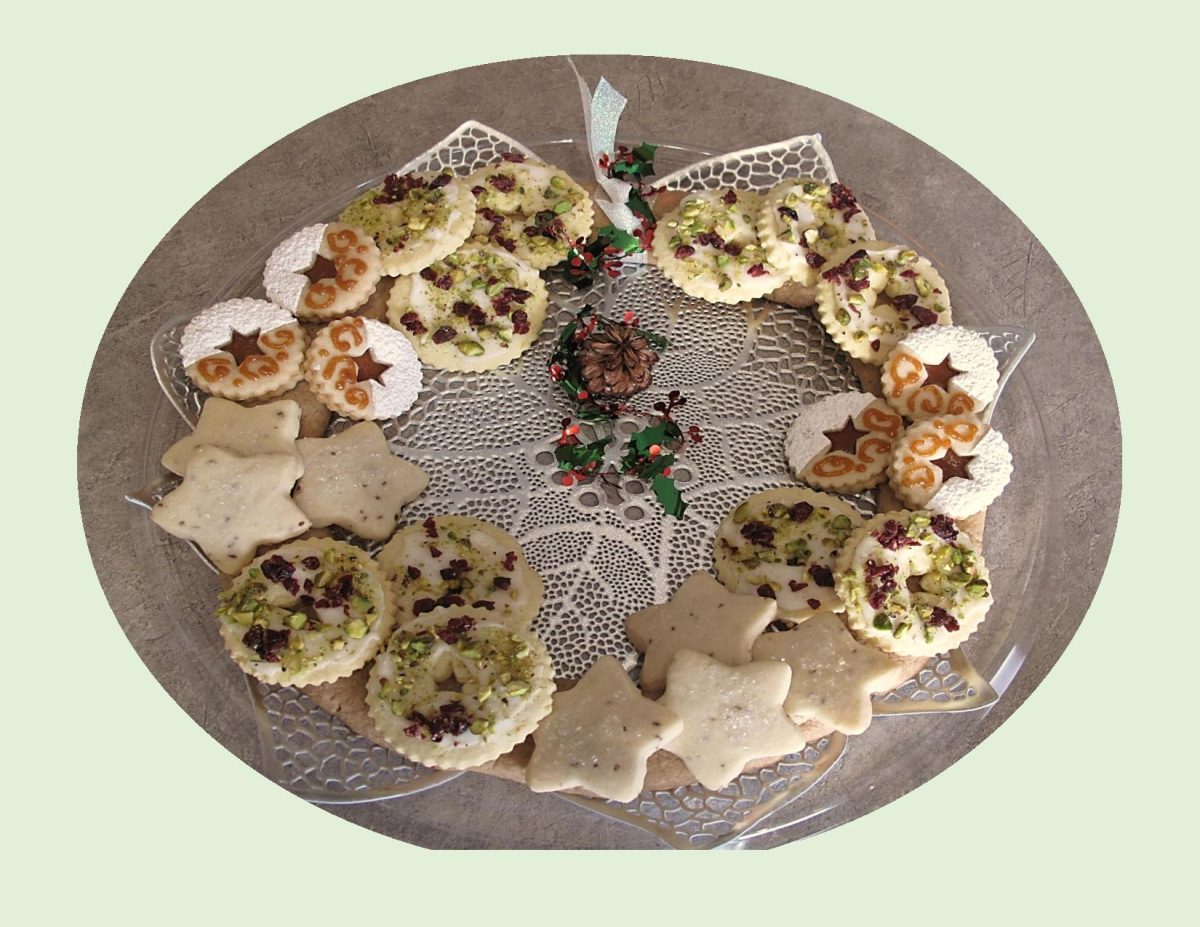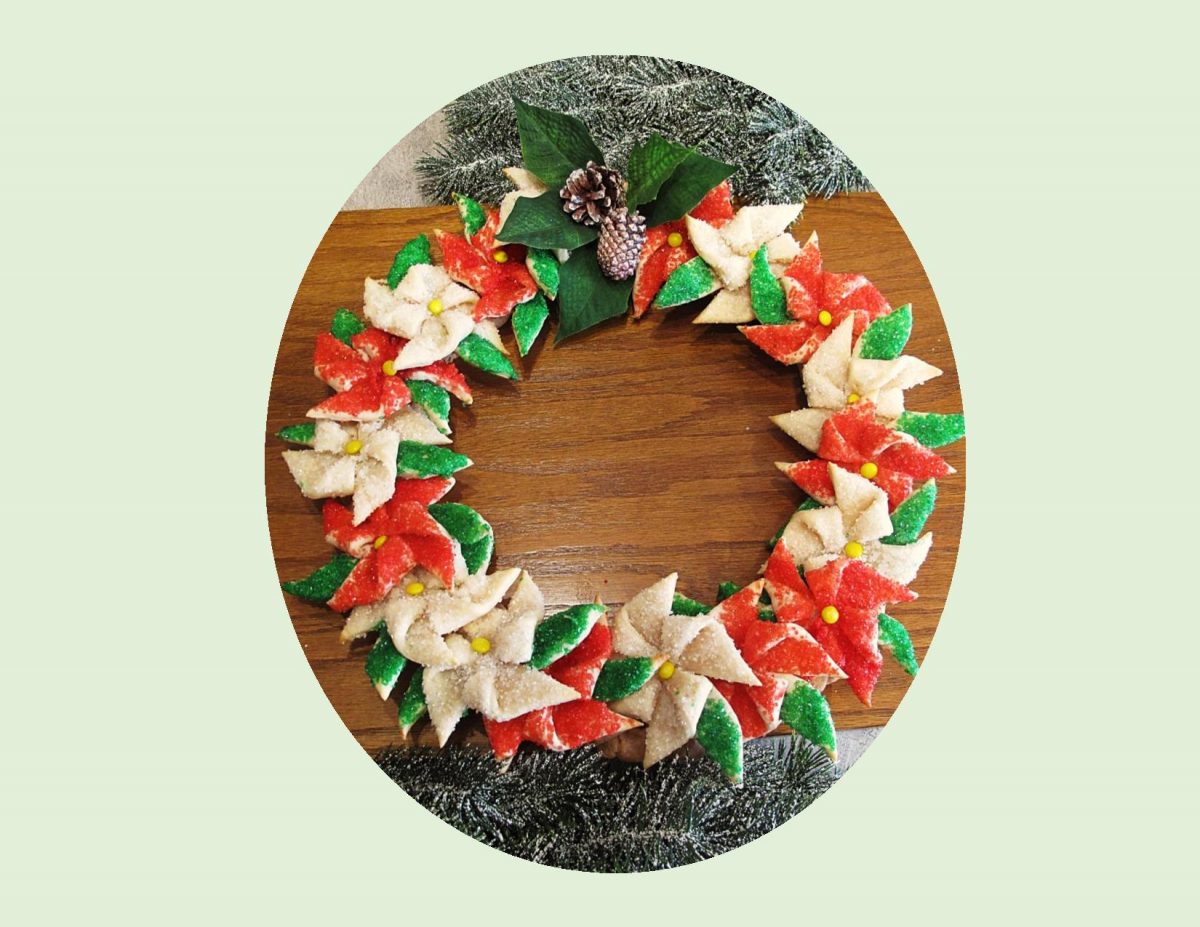While certain holidays such as Christmas, lend themselves to giving food as gifts, gift-giving should be thoughtful and sincere.
We give gifts during the holiday season to express gratitude, love, or friendship to those near and dear throughout the year. But the custom of giving gifts goes all the way back to the first Christmas when the wise men brought Jesus three gifts — gold, frankincense and myrrh.
Many of the gifts we give and receive at Christmas time, especially ones related to food, have symbolic meaning and tales of folklore behind them. Others are just fun to make and share with family and friends. Sometimes those food gifts become an anticipated tradition that the gifter enjoys making and the receiver looks forward to every year.
These Christmas cookie wreaths seem like the perfect gift for our neighbors. Hope they like them because they where a lot of fun to make.

| Servings |
WREATHS
|
- 4 cups flour
- 2 tsp cinnamon
- 3/4 tsp anise seed, ground
- 1/4 tsp EACH nutmeg, cloves, ginger, cardamom & white pepper
- 1/2 tsp salt
- 2 tsp baking powder
- 1/2 cup dark brown sugar
- 1/2 cup white sugar
- 3 Tbsp honey
- 2 eggs
- 250 gm OR 1 cup + 2 Tbsp butter, melted
- 3 1/2 cups powdered sugar
- 1/4 cup fresh squeezed lemon juice
- 150 gm pistachios OR pepita seeds, unsalted & coarsely chopped
- 100 gm dried cranberries, coarsely chopped
- 1/2 cup cornstarch
- 1/2 cup powdered sugar
- 1 cup flour
- 3/4 cup butter,
- 1 Tbsp anise seeds, ground
- white sanding sugar
- silver dragees if you wish
Ingredients
Spicy Wreath Base
Lemon Icing/ Toppings
Anise Shortbread Stars
Persimmon Puree
|

|
- In a large bowl, combine all ingredients. Mix until dough forms. Divide dough in half for 2 separate wreaths. Roll each half into a long strip about 43-inches long. On 2 sheets of parchment paper, draw 2 round circles each about a 13-inch circumference. Place on baking sheets. Following the circle outline, place a strip of dough on each circle. Press with the back of a spoon to flatten to about a 1/2-inch thickness.
- Preheat oven to 310 F. Bake cookie bases for about 15 minutes. They should be baked but not overdone so that the centers are soft. Remove from oven & cool on a wire rack until ready to assemble with cookies.
- In a bowl, sift together cornstarch, powdered sugar, flour & anise powder. Blend in butter with a spoon, mixing until a soft, smooth dough forms. If the dough is too soft to handle, cover & chill about 1 hour.
- Between 2 sheets of parchment paper, roll dough out about 1/2-inch thick. Using a star cookie cutter, cut out stars & sprinkle with coarse white sanding sugar. Transfer to ungreased baking sheets spacing 1 1/2-inches apart. Place baking sheets in refrigerator & chill 30 minutes. Halfway through, preheat oven to 300 F. Bake for about 20 minutes or until edges are just barely browned. Yield: 18
- Arrange cookies on wreath base to your liking. You can either 'fasten' them with an bit of icing that will harden (see notes) or just place them on top base. That way they are easy to pick up by guests without to much trouble. The base can be cut into pieces after the top cookies are eaten for some more cookie goodness.

ICING FOR ATTACHING COOKIES TO WREATH:
- 2 Tbsp warm water
- 1 1/2 tsp corn syrup
- 1 1/2 cups powdered sugar
-
Mix together the warm water, corn syrup and icing sugar for the icing. Make it on the thicker side, so add more icing sugar if needed.





